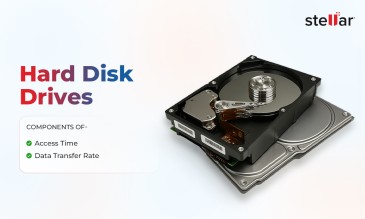Always be aware of any clicking noises from your hard drive, because they're the first symptom of scratching on the platter. This platter scratching noise from the hard drive is caused by the read/write head coming in contact with the platter.
Invariably, customers report that they heard a 'clicking' noise from the hard drive, and soon after that it stopped working. Then begins their search for scratched hard drive platter data recovery. This guide is to help you understand the whole mechanics of the hard drive platter scratching and the implications on data recovery.
What is the Hard Drive Platter?
.png)
A word of caution: We don't recommend you to open a hard drive by your own. Just like you wouldn't expect a surgeon to dissect a human body for surgery in the open, a hard drive isn’t meant to be opened up outside a special environment, called a Clean Room. Opening your hard drive yourself, or letting an amateur experiment with it, will render your scratched hard drive platter data recovery nearly impossible.
Back to the platter for now.
This shiny platter has a thin layer of platinum alloy coating, and this is where your data resides, in the form of 0s and 1s.
Here are some more facts about hard disk platters.
- A standard hard disk platter is 2.5 inches or 3.5 inches in diameter.
- There are some hard drives with more than one platter.
- Data resides on both sides of a platter (that's why you'll find read/write heads on both sides of the platter). However, there are some hard drives in which the data resides on only one side of the platter.
- Platters of a hard drive are rigid, as opposed to the more flexible material that a CD or DVD is made of.
- The platters are mounted on a motor which is called the spindle of the hard drive.
Enough said about the platters, now let's see how they get scratched.
What Causes a Scratched Hard Drive Platter?
Typically, your hard drive platter will get scratched in the following conditions.
1. When the Hard Drive has been in use for Many Years (5+).
Remember that your hard drive is full of moving machinery, including the platter. This is what your hard drive contains.
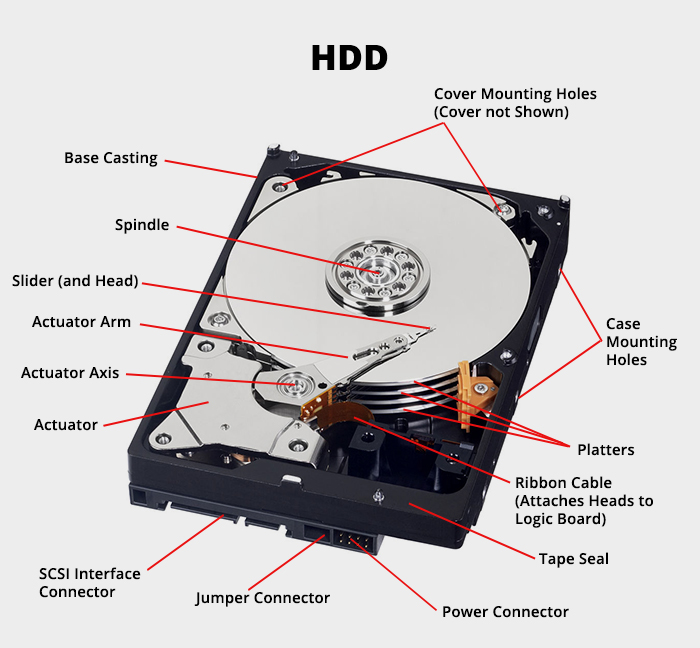
The platter disk rotates at anything between 5,000 rpm and 15,000 rpm.
For context, remember that a piston aircraft engine rotates at 3,000 rpm.
The more you use your hard drive, the more wear and tear occurs inside it. The moving platter can suffer natural wear and tear over time. This becomes evident in the form of scratches on its surface. Read more : Inside a Hard Drive: Head, Platter, PCB, and Spindle Motor
2. When the Hard Drive Operates in a Dusty Environment
Technically, no place is dust-proof. So, whether you use a hard drive inside your house, library, or office, there is always dust in the environment. Every hard drive has tiny openings called breathing holes, through which dust or airborne debris can enter the space inside the drive. If a speck of dust lodges itself between the read/write head and the platter, it can inflict severe scratches on the platter surface.
.png)
The distance between the tip of this moving head and the platter (flying height or floating height or head gap) is of the order of nanometers.
1 nanometer (nm) = 1000 picometers (µm).
A speck of dust is 1 to 10,000 µm in diameter.
So, most dust specks are large enough to occupy the space between the read/write hard and the platter.
In several Indian cities, where the proportion of dust and debris in the air is high, platter scratching is a common problem.
3. When you Spill Water or any Other Liquid on the Hard Drive
External hard drives are at the most risk of being victims of accidental spills.
While the water will evaporate, it leaves behind salt and minerals as residue.
Just like dust, this residue could lodge itself between the read/write head and the platter.
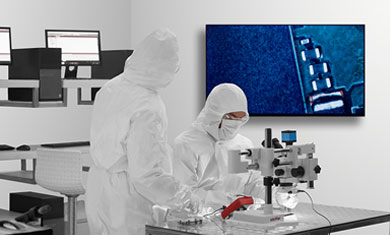
ISO certified Class 100 room environment, where various tasks are conducted on hard drives/storage media
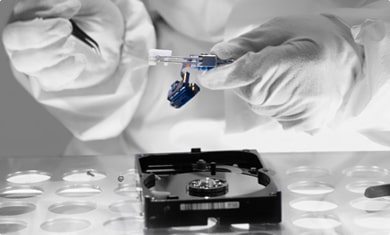
Data Recovery Expert doing parts transplantation on a hard drive in a controlled environment
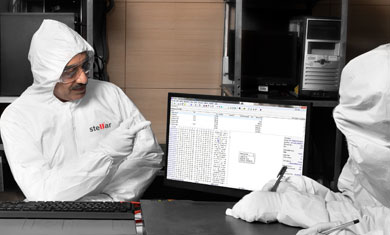
Data Recovery Expert manually checks the quality of recovered data to ensure that the recovered files are in best state
4. Sudden Jerks, Bumps, and Kicks to the Hard Drive in Operation
A sudden jerk, shock, or bump to the hard drive when it's in operation, can inflict damage. When the hard disk is in operation, its platter is rotating. Now imagine what will happen if a disk rotating at -- let's say—5000 rpm—comes in contact with the read/write head hanging over it. This, in fact, is one of the most common causes of scratches on hard drive platters.
.png)
5. When the Read/Write Head is Misaligned
Over time, the read/write head can get misaligned. This means that the rotating platter could rub against the tip of the read/write head. Obviously, the extent of scratching will be severe and will be evident in the form of clicking sounds.
Does scratching a hard drive make it unreadable?
Two things. The data in the sectors that have suffered scratching will certainly be unreadable.
The hard drive may still be readable, and its data still recoverable, if the scratching is light, and you don’t let it worsen.
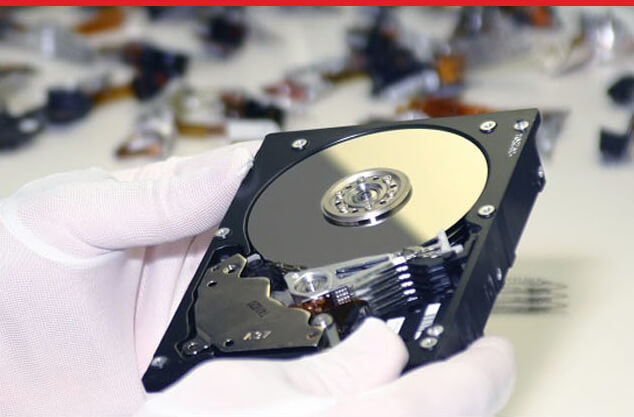
What does the Scratched Hard Drive Platter mean for your Data Recovery?
We've explained earlier that your data resides on the shiny surface of the platter in the form of stored values of 0s and 1s. Think of your platter as a flowerbed. Now imagine how the flowerbed will look like when it's been trampled by a mob. This is your hard disk’s platter on scratching.
The read/write head gouges out a layer of the platinum alloy.
The data residing in the affected sector, on the surface that's now reduced to microscopic dust, is now gone forever.
This microscopic dust itself can inflict further damage by getting lodged between other segments of the platter and the read/write head.
This makes the scratched hard drive platter data recovery more complex.
Also Read : How much does data recovery cost in India?
How Complex is Scratched Hard Drive Platter Data Recovery?
To someone who can't access important data on their hard drive, what matters most is to understand whether scratched hard drive platter data recovery is possible.
Light Scratching of the Platter
In case of light scratching of the hard drive platter, recovery may be possible. We can remove the embedded particulate matter from the scratched platter and use proprietary materials and machinery to burnish the platter (remove the scratches).
However, this isn't easy. Invariably, scratched hard drive platter data recovery will involve these highly complex tasks.
- Remove the platter from the hard drive, in a state-of-the-art Class 100 Clean Room
- Clean the platter with proprietary liquid solution/ lab grade liquid.
- It’s gently dried either naturally or in a vacuum oven.
- Re-attach the platter to the chassis
This is the equivalent of carrying a complex surgery. You need a team of experts who have experience in scratched hard drive platter data recovery and have the infrastructure necessary to perform this complex activity.
In other cases, we may need to replace the motor (which can also be damaged by the particulate matter inside the hard drive.
In most cases of scratched platters, the read/write head also needs to be replaced, because it's damaged, and likely to cause damage again to the cleaned and burnished platter.
Severe Scratching of the Platter
In case of severe scratching of the hard drive platter, recovery is extremely difficult. In some of these cases, our experts can recover RAW files from the damaged drive. To restore the specks of the platter surface to their original
place is impossible. This means the data from the scratched sectors is lost.
However, most of the remaining data is still safe, even though the drive itself may become unreadable.
That's why we recommend that when you hear a clicking sound from your hard drive, immediately stop using it, and call us. This will restrict the scratching and will let our experts recover the majority of the remaining data, and prevent the permanent loss of data from your hard drive.
Also Read : Data Recovery When Hard Drive Does Not Spin
How do we Recover Data from Scratched Platters in our Data Recovery Labs?
At Stellar Data Recovery Services, we receive HDDs for scratched hard drive platter data recovery every day. In every case where the scratching is mild, we are able to recover the data for our clients.
That's because:
Our data recovery experts have experience in recovering data from scratched platters.
We have a massive library of donor hard drives, which means we can find all internal parts (spindle, read/write head, PCBs, etc) that may need to be transplanted because of damage.
Our state-of-the-art Clean 100 Clean Room is the biggest in South Asia.
Avoid taking your damaged hard drive to an amateur data recovery lab professional, because opening your drive inside a cabin or lab is likely to expose the platter to further damage. This makes scratched hard drive platter data recovery even when it might have been possible had you immediately contacted experts.
If you have a hard drive whose platter is scratched, contact us and we'll diagnose it and tell you whether the data can be recovered or not.
About The Author

Sr. Online Marketing Executive and Content Writer at Stellar Data Recovery.








